Micronics Caslon II 600W PSU Review: A Low-Cost Gem?
Why you can trust Tom's Hardware
Transient Response Tests
Advanced Transient Response Tests
For details on our transient response testing, please click here.
Ιn these tests, we monitor the Caslon II's response in several scenarios. First, a transient load (10A at +12V, 5A at 5V, 5A at 3.3V, and 0.5A at 5VSB) is applied for 200ms as the PSU works at 20 percent load. In the second scenario, it's hit by the same transient load while operating at 50 percent load.
In the next sets of tests, we increase the transient load on the major rails with a new configuration: 15A at +12V, 6A at 5V, 6A at 3.3V, and 0.5A at 5VSB. We also increase the load-changing repetition rate from 5 Hz (200ms) to 50 Hz (20ms). Again, this runs with the PSU operating at 20 and 50 percent load.
The last tests are even tougher. Although we keep the same loads, the load-changing repetition rate rises to 1 kHz (1ms).
In all of the tests, we use an oscilloscope to measure the voltage drops caused by the transient load. The voltages should remain within the ATX specification's regulation limits.
These tests are crucial because they simulate the transient loads a PSU is likely to handle (such as booting a RAID array or an instant 100 percent load of CPU/GPUs). We call these "Advanced Transient Response Tests," and they are designed to be very tough to master, especially for a PSU with a capacity of less than 500W.
Advanced Transient Response at 20 Percent – 200ms
| Voltage | Before | After | Change | Pass/Fail |
|---|---|---|---|---|
| 12V | 12.088V | 11.864V | 1.85% | Pass |
| 5V | 5.125V | 4.962V | 3.18% | Pass |
| 3.3V | 3.366V | 3.136V | 6.83% | Fail |
| 5VSB | 5.078V | 4.990V | 1.73% | Pass |
Advanced Transient Response at 20 Percent – 20ms
| Voltage | Before | After | Change | Pass/Fail |
|---|---|---|---|---|
| 12V | 12.087V | 11.789V | 2.47% | Pass |
| 5V | 5.125V | 4.971V | 3.00% | Pass |
| 3.3V | 3.366V | 3.099V | 7.93% | Fail |
| 5VSB | 5.079V | 5.017V | 1.22% | Pass |
Advanced Transient Response at 20 Percent – 1ms
| Voltage | Before | After | Change | Pass/Fail |
|---|---|---|---|---|
| 12V | 12.086V | 11.838V | 2.05% | Pass |
| 5V | 5.125V | 4.939V | 3.63% | Pass |
| 3.3V | 3.366V | 3.096V | 8.02% | Fail |
| 5VSB | 5.078V | 5.007V | 1.40% | Pass |
Advanced Transient Response at 50 Percent – 200ms
| Voltage | Before | After | Change | Pass/Fail |
|---|---|---|---|---|
| 12V | 12.021V | 11.784V | 1.97% | Pass |
| 5V | 5.100V | 4.932V | 3.29% | Pass |
| 3.3V | 3.351V | 3.113V | 7.10% | Fail |
| 5VSB | 5.025V | 4.947V | 1.55% | Pass |
Advanced Transient Response at 50 Percent – 20ms
| Voltage | Before | After | Change | Pass/Fail |
|---|---|---|---|---|
| 12V | 12.021V | 11.690V | 2.75% | Pass |
| 5V | 5.101V | 4.956V | 2.84% | Pass |
| 3.3V | 3.351V | 3.073V | 8.30% | Fail |
| 5VSB | 5.025V | 4.963V | 1.23% | Pass |
Advanced Transient Response at 50 Percent – 1ms
| Voltage | Before | After | Change | Pass/Fail |
|---|---|---|---|---|
| 12V | 12.024V | 11.776V | 2.06% | Pass |
| 5V | 5.099V | 4.901V | 3.89% | Pass |
| 3.3V | 3.351V | 3.069V | 8.24% | Fail |
| 5VSB | 5.027V | 4.949V | 1.56% | Pass |





This is probably the worst performance we've ever seen from a 3.3V rail in our transient response tests. Performance on the other rails is mediocre.
Get Tom's Hardware's best news and in-depth reviews, straight to your inbox.
Here are the oscilloscope screenshots we took during Advanced Transient Response Testing:
Transient Response At 20 Percent Load – 200ms



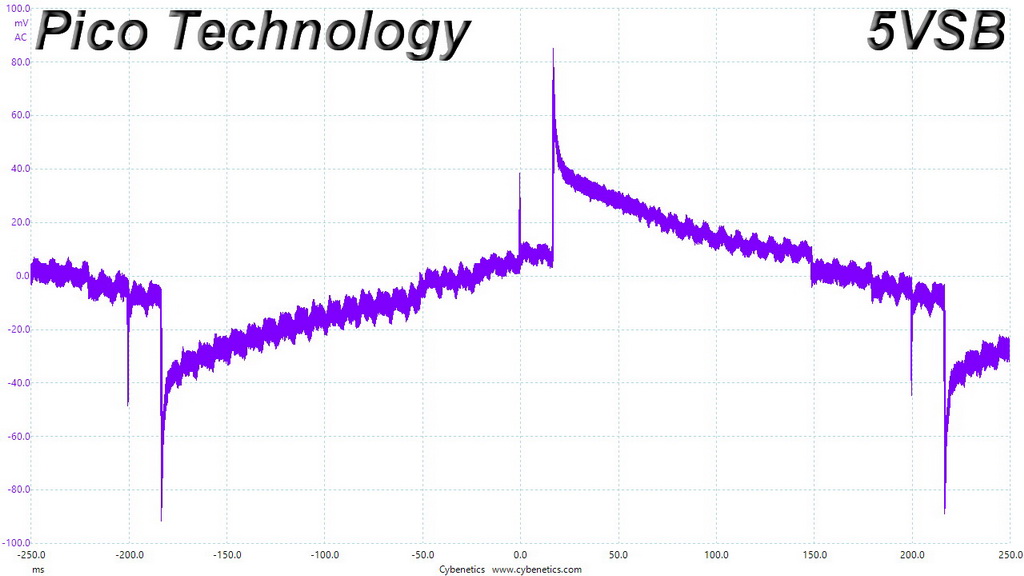
Transient Response At 20 Percent Load – 20ms
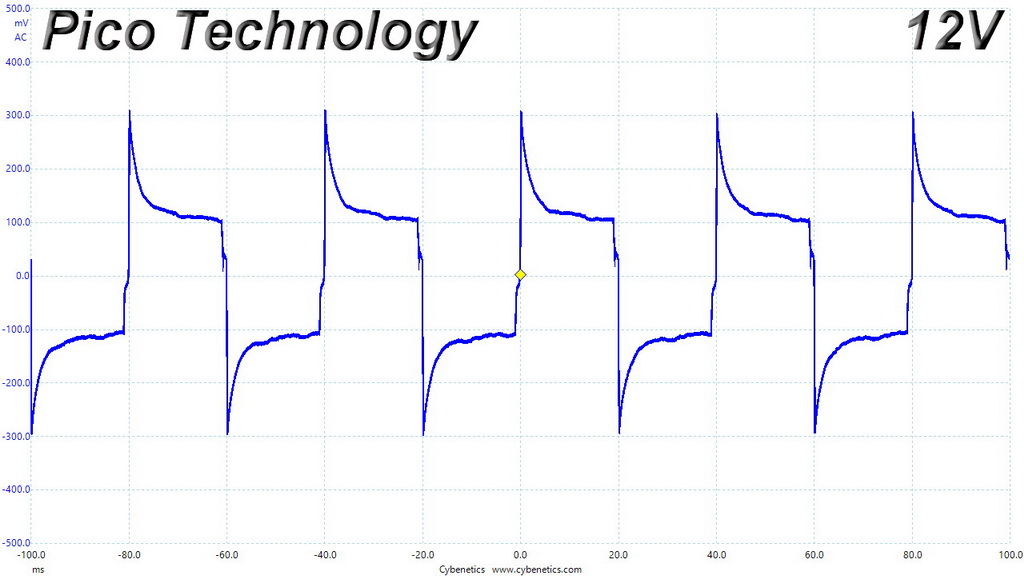



Transient Response At 20 Percent Load – 1ms




Transient Response At 50 Percent Load – 200ms




Transient Response At 50 Percent Load – 20ms




Transient Response At 50 Percent Load – 1ms
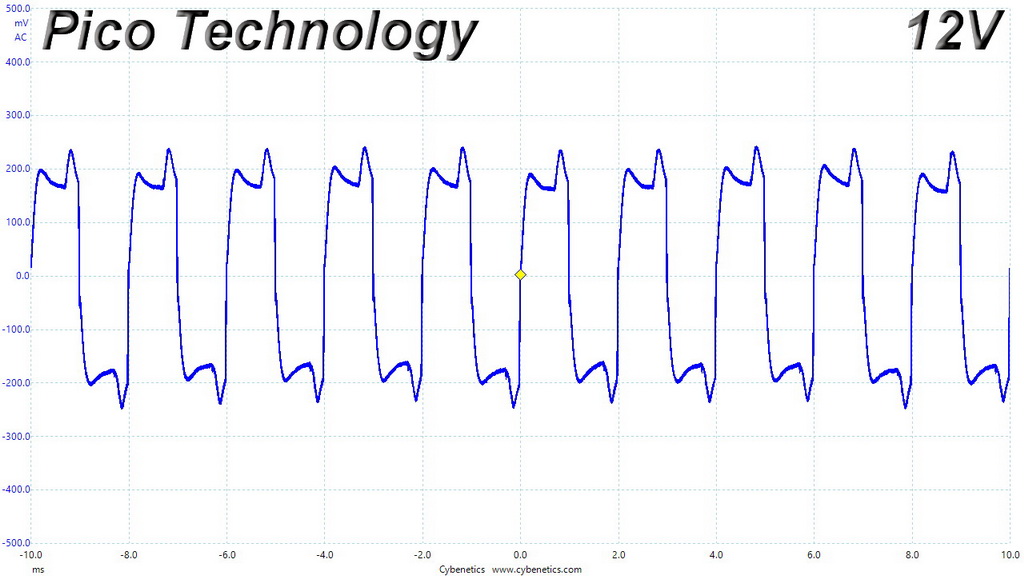
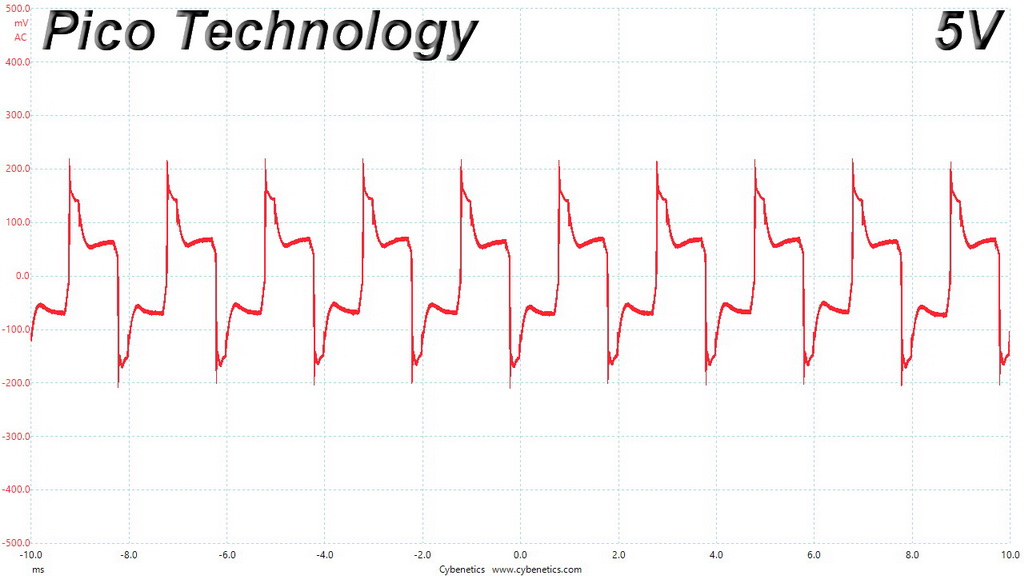


Turn-On Transient Tests
In the next set of tests, we measured the Caslon II’s response in simpler transient load scenarios—during its power-on phase.
For our first measurement, we turned the Caslon II off, dialed in the maximum current the 5VSB rail could output, and switched the PSU back on. In the second test, we dialed the maximum load the +12V rail could handle and started the 600W supply while it was in standby mode. In the last test, while the PSU was completely switched off (we cut off the power or switched the PSU off), we dialed the maximum load the +12V rail could handle before switching it back on from the loader and restoring power. The ATX specification states that recorded spikes on all rails should not exceed 10 percent of their nominal values (+10 percent for 12V is 13.2V, and 5.5 V for 5V).


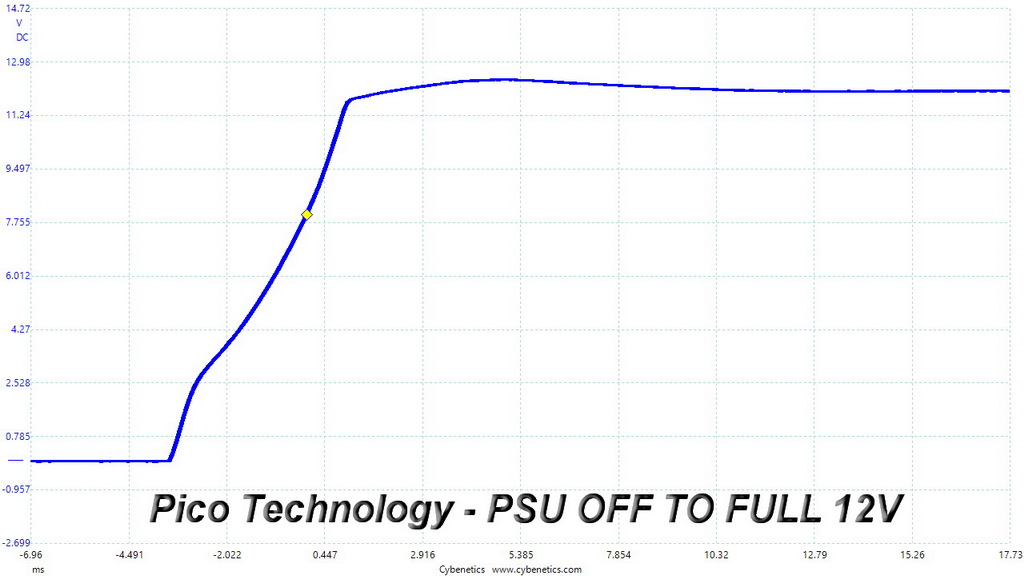
We don't remember ever seeing such a sharp slope at 5VSB. Normally, the rise time has to be within 0.2ms to 20ms on every rail, but that doesn't appear likely on the 5VSB rail. Besides the sharp voltage rise, we also notice a voltage overshoot.
In the next test, the +12V rail registers a notable voltage overshoot, while the slope is smooth in the last test.
MORE: Best Power Supplies
MORE: How We Test Power Supplies
MORE: All Power Supply Content
Current page: Transient Response Tests
Prev Page Cross-Load Tests & Infrared Images Next Page Ripple Measurements
Aris Mpitziopoulos is a contributing editor at Tom's Hardware, covering PSUs.
-
nobspls Why would anyone choose this one say over the Corsair CX650M? Which you can get typically for $50.Reply -
spentshells " Not only does this minimize your carbon footprint"Reply
The idea of conserving electricity is a fallacy, if you use less the people selling can sell more to someone else..... they aren't just holding on to the energy you saved because you're a hero saving the world.
Making your footprint smaller doesn't matter in the least when someone else's foot print just gets that much bigger.
Save some money, sure but for how long? The less you use the more they can charge for that smaller amount later on..... that's how it is.
On a different note, Ill likely try the psu out at one point on a build for someone else. -
rohs42 > The idea of conserving electricity is a fallacyReply
No it isn't. Of course a 100 megawatt generator will not be turned off if someone saves 10 watts of power. But if a 10 million people save 10 watts of power, then of course it will be turned off. And if 100 million people save 10 watts, then there'll be no business case for that new gigawatt power plant.
As citizens, consumers and voters we all bear a small share of responsibility for the state of the world, and we all have a small part to play in making it better. It's only through working together that humanity improves. Your appeal to helplessness and apathy is pathetic. -
jabliese Hey Tom's,Reply
Once upon a time, we had an extensive brown out at work, which went on for 3 days. On day 2, I was surprised to find many of the PC's that were still working were on 60v power. Over the years, it did not seem to have a adverse affect on any of the power supplies. Lately, I have been wondering what their efficiency numbers looked like during that time, any chance you could add a severe undervolt test to the power supply suite? -
Aris_Mp 60V is too low. Most PSUs won't even work at such low voltage. I am surprised to hear that the PSUs at your work were working under such conditions for days.Reply
Efficiency drops along with voltage input. I want to add more protection tests, however I already have enough fails with the current ones. Nonetheless, I am keeping every suggestion under consideration.